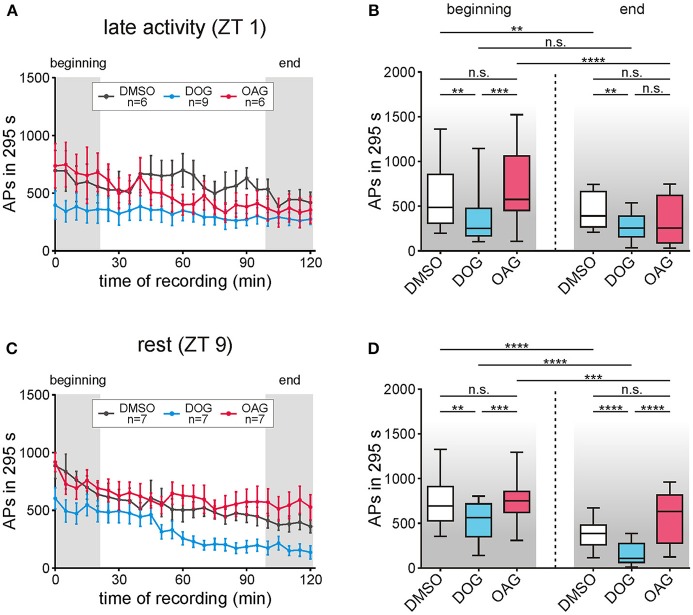Figure 8.
Only the diacylglycerol-analog DOG but not OAG decreased the late, long-lasting pheromone response (LLPR) at both Zeitgebertimes (ZTs). The number of APs between 5 s and 300 s after each stimulation with 1 μg bombykal was evaluated and statistical analysis was performed for the first and last 20 min of the recordings (gray areas, A,C). (A,B) During the late activity phase the LLPR decreased in controls (n = 6) and during application of 100 μM OAG (n = 6) but no significant differences were found when comparing both groups. However, 100 μM DOG (n = 9) highly significantly decreased the LLPR in comparison to the controls but showed no changes over the course of time. (C,D) In recordings during rest the LLPR continuously decreased in controls (n = 7) as well as with DOG (n = 7) or OAG (n = 7). Again, application of OAG did not change the LLPR in comparison to the controls while with DOG a significant reduction and steady decline occurred in the first and the last 20 min of the recordings (for exact P-values see Table 5; for mean values ± SEM see S7. n.s. = not significant; *P < 0.05; **P < 0.01; ***P < 0.001; ****P < 0.0001; Wilcoxon test, Mann-Whitney test or Kruskal-Wallis test with Dunn's post-hoc test for multiple comparison).

